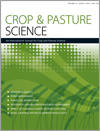CP19067Impact of intercropping and co-inoculation with strains of plant growth-promoting rhizobacteria on phosphorus and nitrogen concentrations and yield of durum wheat (Triticum durum) and faba bean (Vicia faba)
 , Abdelkhalek El Alaoui, Anas Raklami, Loubna Benidire, Abdel-ilah Tahiri and Khalid Oufdou
, Abdelkhalek El Alaoui, Anas Raklami, Loubna Benidire, Abdel-ilah Tahiri and Khalid Oufdou
Intercropping is a farming practice used to boost the crop yield. In this study we investigated the combined effects of inoculation by plant growth-promoting rhizobacteria and intercropping on growth, and phosphorus and nitrogen nutrition of durum wheat and faba bean. Inoculation of intercrops significantly improved biomass and nutrient concentrations in plants and their spikes/pods compared with monoculture and single inoculation treatments, suggesting that intercropping and co-inoculation improves the yield of intercrops even under stressful conditions.




